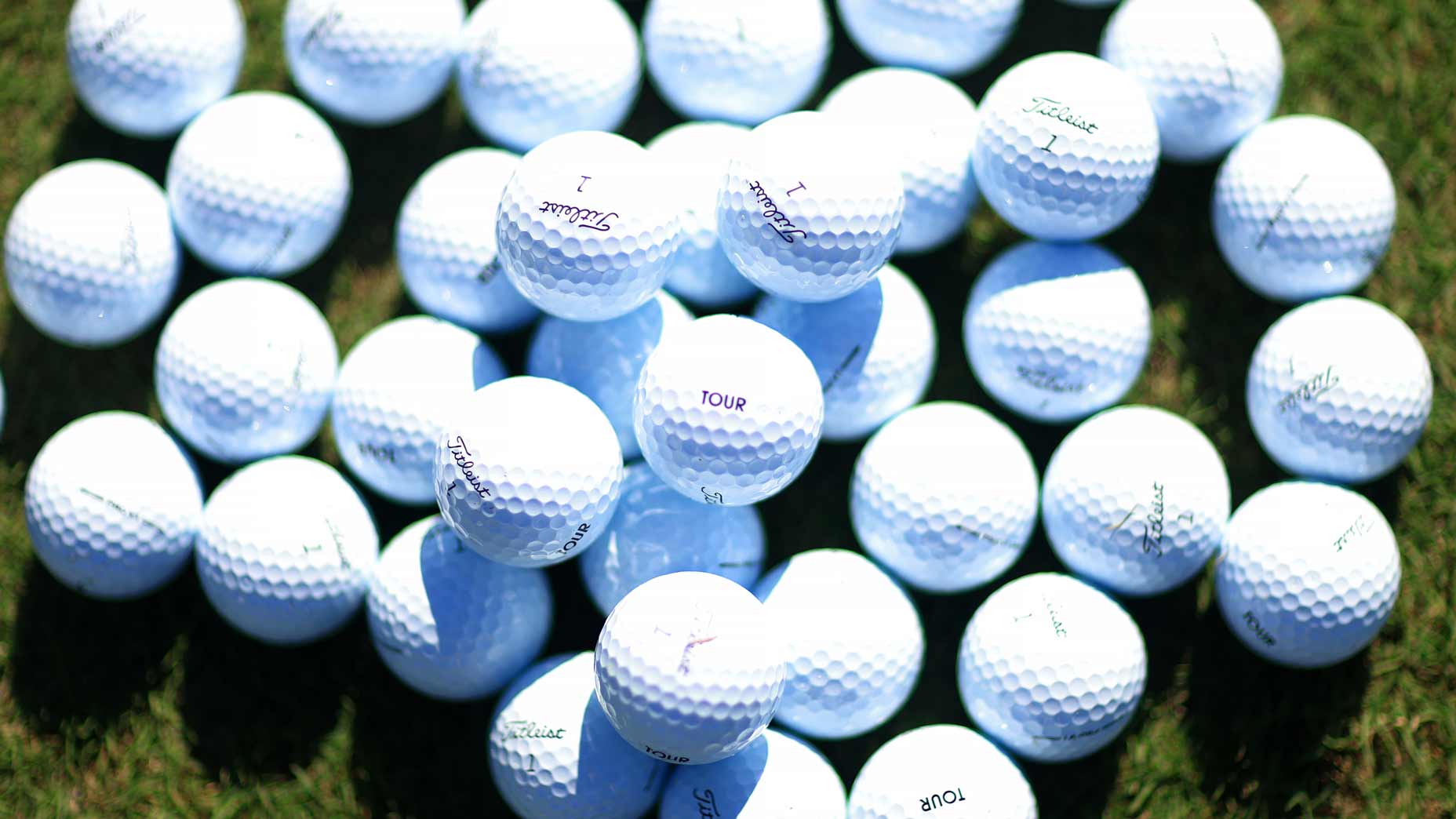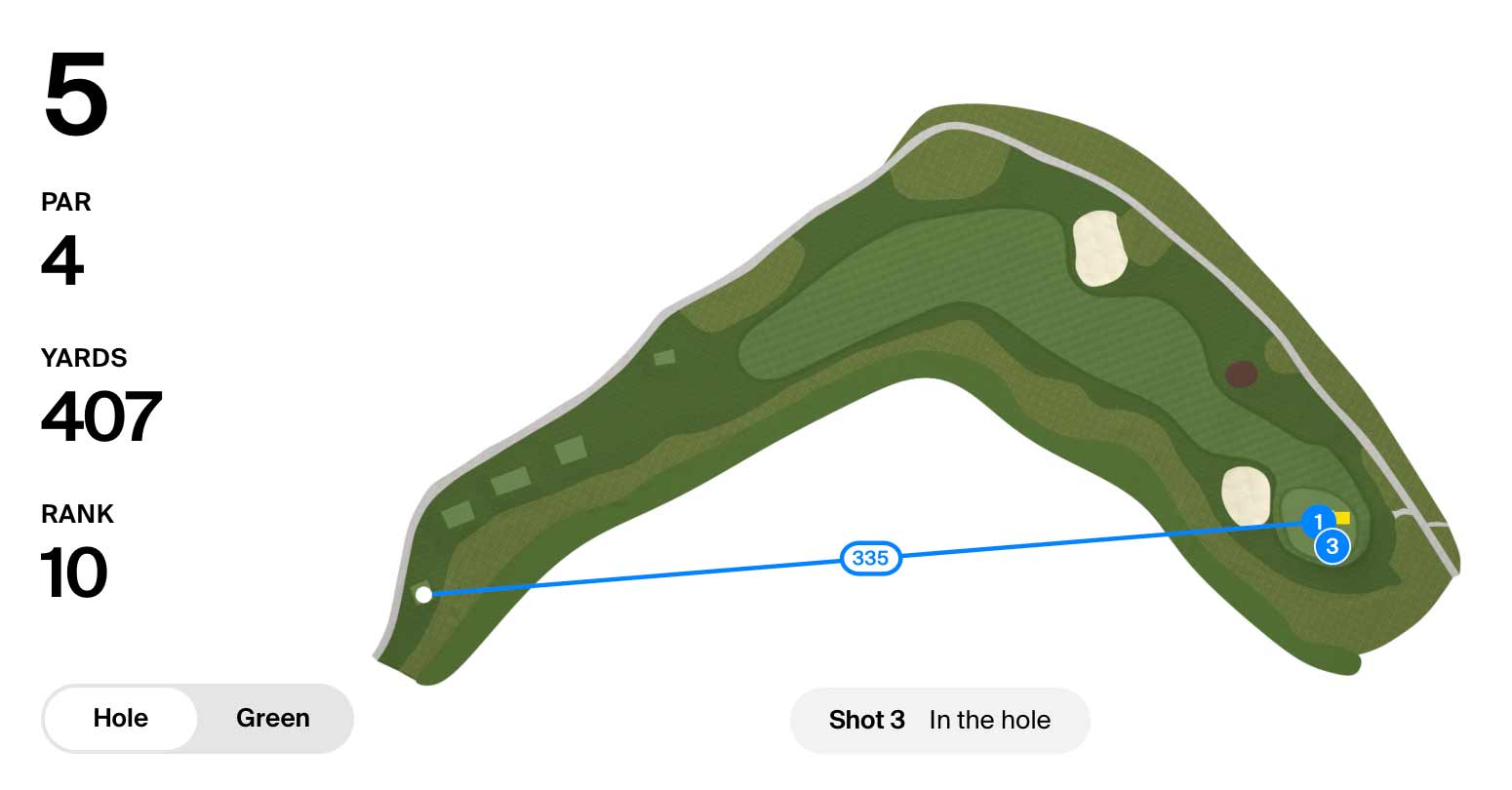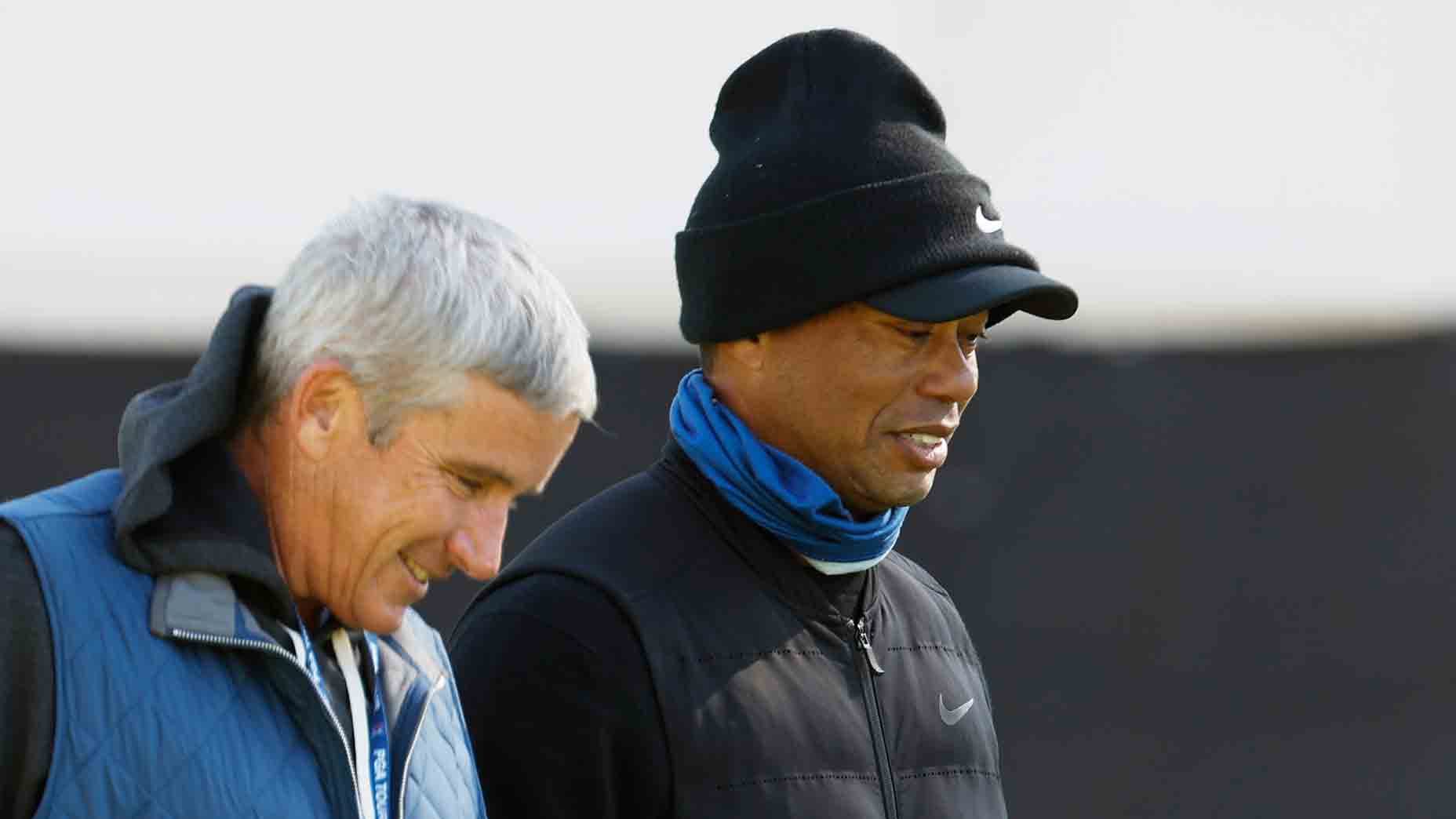Unsure if you’re pro- or anti-golf-ball rollback? This handy guide will tell you

The golf ball rollback is coming. How do you feel about it?
Mike Ehrmann/Getty Images
If you’ve found yourself lost, confused or upset over the golf-ball rollback discourse taking place on social media or in your golf buddies’ group chat of late, then you’ve come to the right place.
To catch you up: In March, on the heels of 2020’s Distance Insights Project, the governing bodies announced an effort to curtail hitting distances at the highest level in the form of a Model Local Rule that would allow elite golf tournaments to require the use of a ball tested under different conditions. The MLR would have bifurcated golf, meaning high-level competitions would play with the shorter ball and recreational players would use the current ball.
This proposal was met with intense blowback both from average golfers and PGA Tour players alike, which led to the governing bodies’ Wednesday announcement that they are implementing a universal rollback of the golf ball, which will be fully in place come Jan. 1, 2030.
But while bifurcation was seemingly a non-starter for much of the golf community, a universal rollback seems just as divisive.
Not sure whether you are pro- or anti-rollback? Our guide below will help you to decide which side of the aisle you sit on.
Are you pro- or anti-rollback?
Instructions: Read through each of the nine sections below and determine if you are pro- or anti-rollback based on the information provided. Whichever side of the debate gets five or more of your votes will reveal whether you’re on Team Pro Rollback or Team Anti.
1. PGA Tour driving distance
Let’s set aside scoring for a moment and just look at distance with a driver. The average driving distance (on measured drives) on the PGA Tour increased over the past 20 years from 285.9 yards in 2003 to 299.99 this past season. Also in 2003, just nine pros averaged above the hallowed 300-yard mark off the tee, while in 2023 there were a staggering 98.
These days, reaching Pebble Beach’s par-5th 14th in two shots, which was once unthinkable, is now routinely accomplished with irons during the Pebble Beach Pro-Am and U.S. Opens despite the hole measuring nearly 600 yards. Tournaments are constantly building new tees to accommodate the game’s best players.
If you think PGA Tour pros hit the ball too far, you are pro-rollback.
If you like how far PGA Tour pros hit the ball, you are anti-rollback.
2. Average player driving distance
According to the USGA and R&A, the average male golfer hits his driver about 216 yards, which has increased from about 200 yards in 1996.
Under the rollback proposal, which would go into effect for professional competition in 2028 and then for all golfers two years later, male golfers with average swing speeds of 93 mph can expect to lose about 3 to 5 yards on their tee shots. The average female golfer with a swing speed of 72 mph can expect to lose 1 to 3 mph of distance. The loss of distance for irons is expected to be imperceptible.
So the average 216-yard drive might become 211 yards under the new golf ball standard.
If you aren’t concerned about you (and everyone else) losing distance, you are pro-rollback.
If you are concerned about you (and everyone else) losing distance, you are anti-rollback.
3. Future of classic golf courses
Many fans were appalled during the 2022 Open Championship at the Old Course at St. Andrews when pros drove the green on multiple par-4s, including the famed 18th.
While Cameron Smith’s winning score of 20 under was just one stroke better than Tiger Woods’ mark in 2000 at the same venue, Woods was eight clear of the field that week. In 2022, Smith was followed closely by Cam Young at 19 under and Rory McIlroy at 18 under.
Many chalked up the low scoring, as well as the sluggish pace of play that week, to the modern players’ ability to overpower the roughly 470-year-old course.

But it’s not just the Home of Golf where distance gains have been an issue. Rory McIlroy called this year’s setup at beloved PGA Tour venue TPC River Highlands “obsolete.” Just last month, Ludvig Aberg’s back-to-back 61s on the weekend at the RSM Classic helped him tie the PGA Tour scoring record of 253 (and included him driving the green on a 407-yard par-4).
The counterpoint to this argument: Watching the best players perform at once-unthinkable levels is fun! Why would we curtail that?
After the announcement Wednesday, USGA CEO Mike Whan said on Golf Channel not to expect courses that already are obsolete for USGA championships to make their way back into the rotation.
“We’ve both got a folder of golf courses we don’t think we can play our elite events,” Whan said. “This change is not significant enough to make me take any of those courses out of the folder.”
If you’re bummed out about golf courses becoming obsolete for the best players in the modern age, you are pro-rollback.
If you’re not bummed out about golf courses becoming obsolete for the best players in the modern age, you are anti-rollback.
4. Golf course safety
With the golf ball going farther than ever — and certainly farther than many golden era architects could have ever envisioned — the misses are also bigger. That means golfers, amateur and professionals alike, are hitting into other fairways more than ever, especially on older golf courses that were built on smaller properties.
Padraig Harrington has mentioned this issue several times when talking about courses back in his home country of Ireland.
“The big winner could be golf courses new and old,” Harrington, wrote in a post on Twitter in support of a rollback. “Most of the golf courses in Dublin City are obsolete for the young adult golfer and the courses are out of options. Signs like you can only hit this direction with an iron etc. … We all know a course that has had to close a hole for safety reasons. The youth of today that we crave so much in golf, when they miss they miss big.”
This isn’t as much of a concern on many newer golf courses, which often use more land and don’t have tees abutting greens like classic designs.
If you think distance in the game presents a safety concern, you are pro-rollback.
If you do not think distance in the game presents a safety concern, you are anti-rollback.
5. Shorter tees
This one is simple. The best and easiest way to counteract a loss of five percent in distance is to play a course that is five percent shorter.
Unless you’re playing in an organized tournament, no one is telling you and your buddies from which tees to play.
If you’re willing to play from shorter tees, you are pro-rollback.
If you’re not willing to play from shorter tees, you are anti-rollback.
6. LPGA setups
Golf Channel’s Brandel Chamblee issued an eye-opening rebuke of LPGA course setups during coverage of the U.S. Women’s Open at Pebble Beach this year.
During the first round of that event, Chamblee said just 11 players found the green in two at one of Pebble’s four par-5s — three of which are considered reachable during the PGA Tour’s AT&T Pebble Beach Pro-Am. Chamblee came up with the formula that suggested LPGA setups should be about 1,100 yards shorter than PGA Tour setups. In reality, they are, on average, only 600 yards apart.
“It robs the game of some of the excitement,” Chamblee said that week. “These par-5s are meant to be exciting. They’re meant to have a shot at the 18th green in two. Not a single player today hit the 18th green in two. … You go back to the major championships that are played here, and these are some of the most exciting moments when players have a chance to go for par-5s in two.”
Of course, a rolled-back golf ball would allow top women’s events to change their setups drastically, and be more proportional to men’s setups.
If you think LPGA course setups are not too long, you are pro-rollback.
If you think LPGA course setups are too long, you are anti-rollback.
7. Driver heads
Driver technology has exploded over the past 40 years, ever since the advent of the metal head. Since then, major OEMs have developed new technologies to be able to adjust face angles and loft on the fly and move the center of gravity within a club. There’s also been breakthroughs in new material usage such as titanium and carbon fiber.
Drivers also became bigger and bigger, leading the governing bodies to cap the maximum volume at 460 cc.
All of this has led the driver to go from one of the hardest clubs in the bag to hit to a club players can swing away at without much fear of missing the huge sweet spot.
Some pros, like Adam Scott, believe the driver, not the ball, is the real issue.
“The penalty for missing a driver just isn’t high enough anymore, in my opinion, at the top level,” Scott said on Smylie Kaufman’s Smylie Show podcast in July. “I’d like to maybe address that first and see what knock-on effects that has. If guys want to swing at it 130 mph, with a tiny driver head, then good luck.”
LPGA Tour player Jenny Shin suggested as much in the wake of the rollback news this week.
As part of the USGA and R&A’s Wednesday announcement, the governing bodies said they also are continuing to investigate driver performance in two areas: spring-like effect and off-center forgiveness.
If you think the golf ball is the problem and not the driver head, you are pro-rollback.
If you think the driver head is the problem and not the golf ball, you are anti-rollback.
8. Bifurcation
The original USGA and R&A proposal was for elite competitions (Tour pros and elite amateur competitions) to adopt a Model Local Rule to require the use of the rolled-back golf ball, while most recreational amateurs would be free to use the current ball.
This proposal was met with sharp criticism from both the game’s elite and recreational players. But world No. 2 Rory McIlroy was a strong proponent of bifurcation and has continued to argue for it, even in the wake of the governing bodies’ new plan.
“The people who are upset about this decision shouldn’t be mad at the governing bodies, they should be mad at elite pros and club/ball manufacturers because they didn’t want bifurcation,” McIlroy wrote on Twitter Sunday. “The governing bodies presented us with that option earlier this year. Elite pros and ball manufacturers think bifurcation would negatively affect their bottom lines, when in reality, the game is already bifurcated. You think we play the same stuff you do? They put pressure on the governing bodies to roll it back to a lesser degree for everyone. Bifurcation was the logical answer for everyone…”
Tiger Woods has also been a strong supporter of bifurcation, as he reminded reporters last Saturday at the Hero World Challenge.
“I’ve always been for bifurcation,” Woods said. “I’ve always said that. Just like wood bats and metal bats [in baseball].”
If you like playing the same equipment as the pros, you are pro-rollback.
If you don’t care about playing the same equipment as the pros, you are either anti-universal rollback and/or pro-bifurcation.
9. Sustainability
As golfers have hit the ball farther, golf courses have become longer.
Longer golf courses mean more space.
More space means more grass.
More grass means more water, more land costs, more maintenance costs, you get the idea.
Complicating matters further is climate change and the decreasing availability of water in places like the American West, where golf courses have already had to turn to unique strategies to conserve water usage.
Nor does every golf course have the ability of Augusta National to acquire surrounding land to lengthen its holes, as it did for the par-5 13th this year.
If golfers continually keep hitting the ball farther and golf courses keep needing to find more land, costs could skyrocket both to secure space for golf courses and pay to maintain them.
If you think increasing driving distances could make golf unsustainable, you are pro-rollback.
If you do not think increasing driving distances could make golf unsustainable, you are anti-rollback.
Results
Tally up your results! Whichever side of the argument received 5 or more of your votes will tell you which camp you fall into.













